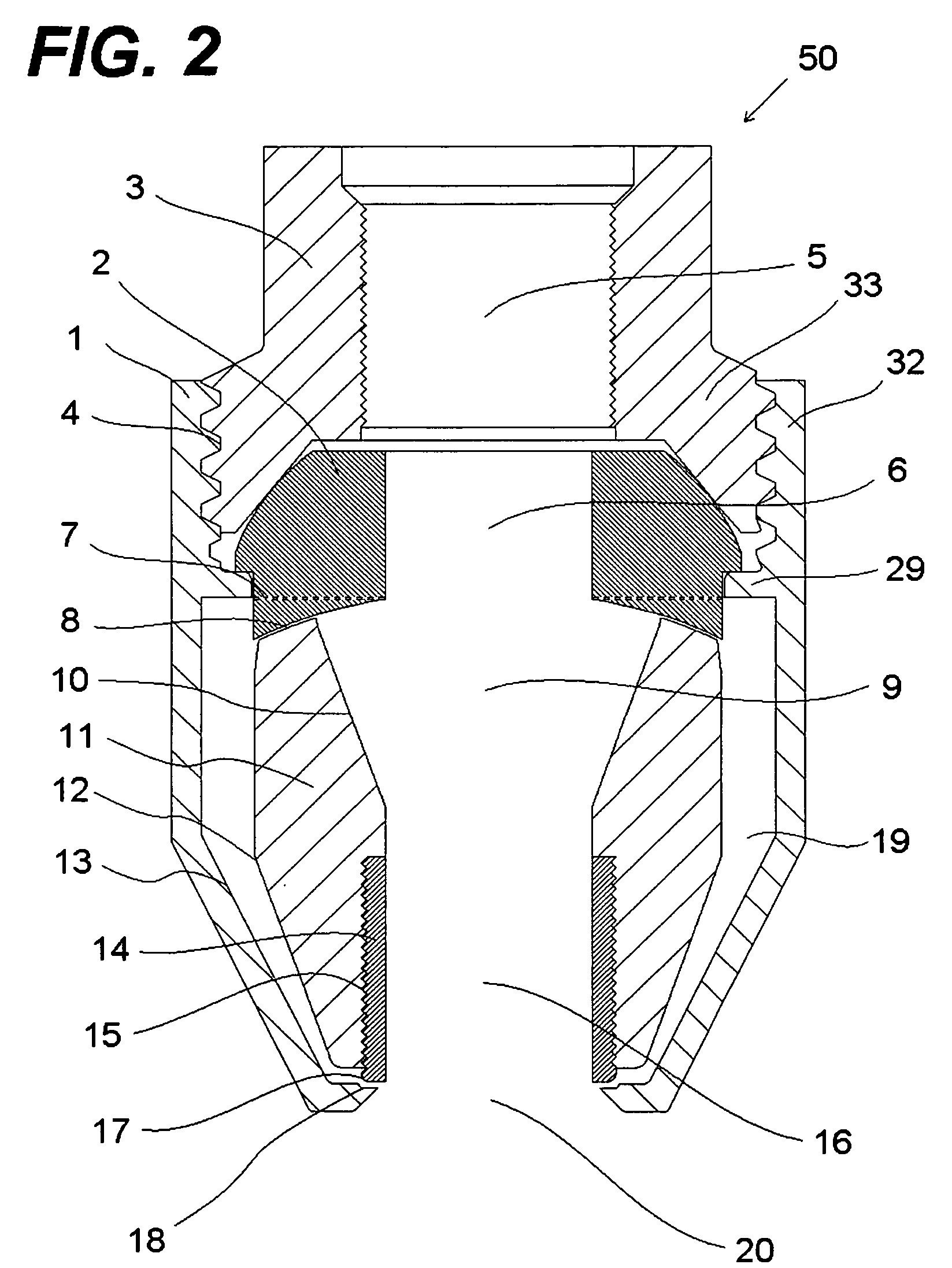Tool and method for drilling, reaming, and cutting
- Summary
- Abstract
- Description
- Claims
- Application Information
AI Technical Summary
Benefits of technology
Problems solved by technology
Method used
Image
Examples
Embodiment Construction
[0021]FIG. 1 shows one embodiment of an orbital tool 50 of the present invention coupled to a drill sting 30 near the bottom of a well bore 31 within a subterranean formation 60. The drill string 30 having a central passage 26 that allows fluid 25 to flow therein. As shown, the drill string 30 has a female threaded drill collar 3 that facilitates the connection of the orbital tool 50 to the drill string 30. Although FIG. 1 illustrates the orbital tool 50 being coupled to a drill string 30, the orbital tool 50 can be coupled to any type of conduit (e.g. tubing, hose, pipe) that allows fluid 25 to flow therein. Fluid 25, as used herein, refers to fluid in any state-gas, liquid, or solid, singularly or in combination. As will be explained in greater detail below, as the fluid 25 passes through the fluid pipeline 5 and into and out of the orbital tool 50, at least a portion of both the fluid 25 and, where applicable, any solids 24 suspended or mixed within the fluid 25 impinge the subte...
PUM
 Login to View More
Login to View More Abstract
Description
Claims
Application Information
 Login to View More
Login to View More - R&D
- Intellectual Property
- Life Sciences
- Materials
- Tech Scout
- Unparalleled Data Quality
- Higher Quality Content
- 60% Fewer Hallucinations
Browse by: Latest US Patents, China's latest patents, Technical Efficacy Thesaurus, Application Domain, Technology Topic, Popular Technical Reports.
© 2025 PatSnap. All rights reserved.Legal|Privacy policy|Modern Slavery Act Transparency Statement|Sitemap|About US| Contact US: help@patsnap.com



